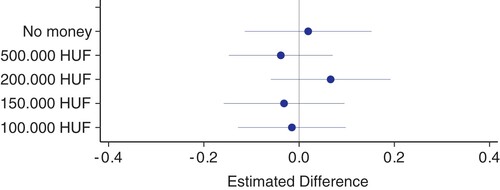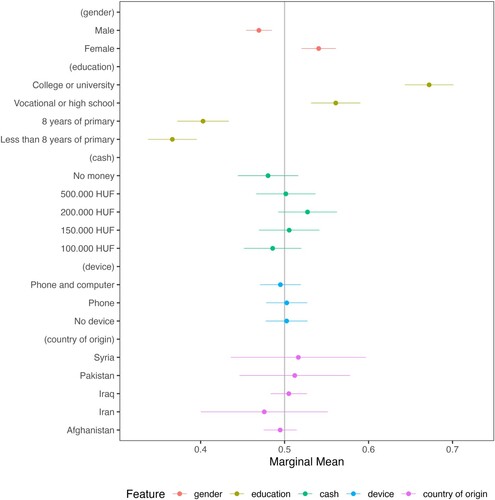Figures & data
Table 1. The hypotheses tested in this paper, the conjoint features (attributes) operationalizing them and their respective formal tests.
Figure 3. Differences in marginal means between respondents who are last with respect to education (i.e. finished elementary school only) and those who are not.

Figure 4. Differences in marginal means between respondent groups, distinguished by being last (i.e. earning a monthly salary of max. 100,000 HUF) and not last based on their income level.





